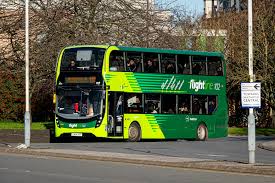Current Updates on the M25 Motorway
Introduction
The M25 motorway, encircling London, is a crucial part of the UK’s transportation infrastructure. Serving as the primary orbital route for vehicles around the capital, it is vital for both personal and commercial traffic. Recent developments regarding its maintenance, upgrades, and traffic management strategies highlight the importance of the M25 in facilitating smoother journeys for millions daily.
Current Developments
As of October 2023, the M25 motorway is undergoing several major upgrades aimed at enhancing both capacity and safety. Project details released by Highways England outline a £50 million investment plan, slated to reduce congestion and improve travel times. These upgrades include new smart motorway sections, which allow variable speed limits to help manage traffic flow better.
Construction on the M25 between junction 16 (M40) and junction 23 (A1(M)) has been particularly prominent, where all-lane running technology will be introduced. This should alleviate bottlenecks that have historically plagued this busy stretch, particularly during peak hours.
Traffic Management and Safety Initiatives
In addition to road upgrades, local authorities have initiated new traffic management strategies to address safety issues on the M25. Recent reports indicate an increase in accidents due to driver behaviour and unexpected congestion. With the rise of smart technology, measures such as real-time traffic updates on electronic signs have been implemented, enabling drivers to make informed decisions while navigating the motorway.
Road safety campaigns have also gained traction, addressing critical issues like speeding and the use of mobile devices while driving. These campaigns, supported by both local police and the National Highways, are crucial in reducing the number of incidents on this heavily trafficked thoroughfare.
Impact on Commuters and Overall Traffic
The ongoing improvements and safety initiatives are expected to significantly affect daily commuters and overall traffic patterns. Highways England has projected that, upon completion, travel times could improve by as much as 20%, especially during rush hour. Furthermore, the proactive measures regarding traffic management promise to enhance road safety for all users.
Conclusion
The M25 motorway continues to evolve and adapt to the increasing demands of vehicular traffic in and around London. The substantial investment in upgrades and the focus on safety through innovative traffic management are encouraging signs for commuters and professional drivers alike. As these projects roll out, the M25 stands to improve not just in functionality, but in safety, making it a vital artery for the UK. Observing how these outcomes unfold in the upcoming months will be essential for understanding the future landscape of this crucial transport route.









